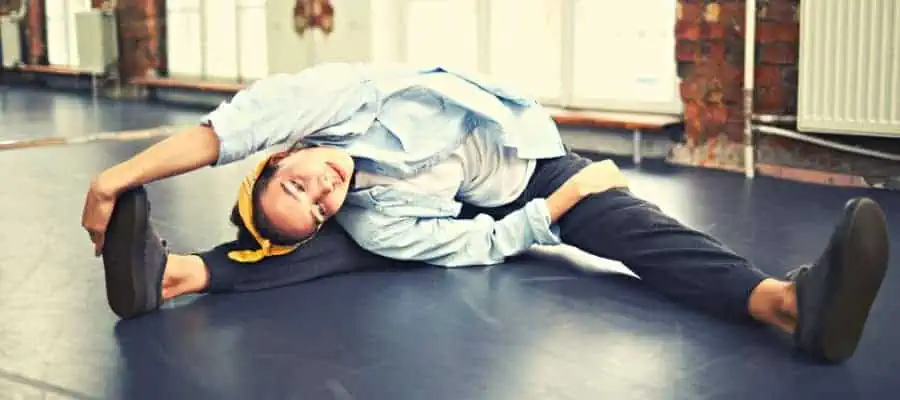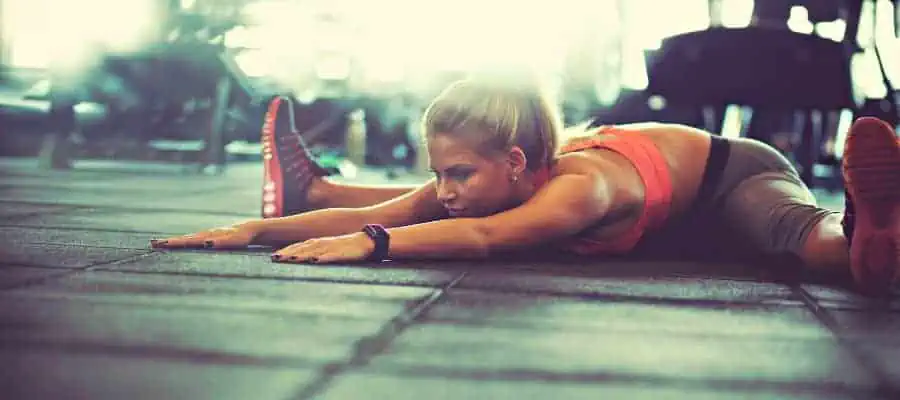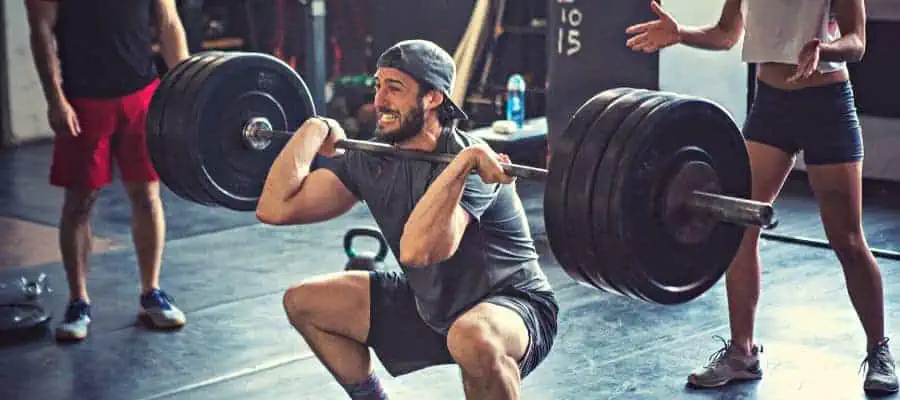Most people think that to box, you need to be highly flexible. However, this simply isn’t the case. While flexibility can undoubtedly help you in boxing, it’s not a requirement. There are plenty of successful boxers who aren’t particularly flexible.
In general, you do not need to be flexible, but flexibility can help with many aspects of boxing. For one, it can help you throw punches with more power. If you’re flexible, you can generate more force because your muscles can extend further. This means that your punches will have more impact when they land. You will also be less likely to injure yourself.
The answer may surprise you since boxing differs from other combat sports.
Do You Need To Be Flexible For Boxing

Flexibility is somewhat important in boxing. Boxers need to be able to move around the ring quickly and avoid getting hit. They also need to have a good range of motion in their arms and legs to reach their opponent without overexposing themselves.
There are a few reasons why flexibility can be helpful in boxing. First and foremost, it allows you to generate more power with your punches. As your muscles can stretch further, you can put more force into your swings. This means your punches will be stronger and have more impact when they land.
If you can move and stretch your muscles in a wide range of motion, you’re less likely to pull or strain them when practicing or competing. Therefore flexibility will help you in the long run. Additionally, flexibility can help prevent injuries.
While being flexible is undoubtedly an advantage in boxing, it is not an essential trait by any means. Many boxers have achieved great success without being particularly limber. Suppose you’re willing to put in the hard work required to improve your flexibility. In that case, you can certainly be successful in this sport – even if you’re not very bendy!
What Is Flexibility?
Flexibility is the range of motion around a joint. The more flexible you are, the greater the range of motion. For example, you’re considered to be very flexible if you can do a split. This means that your muscles and joints can extend further than someone who can’t do a split.
There are two types of flexibility: static and dynamic. Static flexibility is when you can hold a position for an extended period without moving. An example would be holding a handstand or touching your toes. Dynamic flexibility is when you can move through a range of motion repeatedly and smoothly. An example would be doing jumping jacks or lunges without much resistance from your muscles.
Most think flexibility is only important for gymnasts, dancers, and yogis. However, flexibility is essential for everyone, regardless of whether or not you exercise regularly. That’s because flexibility helps keep your joints healthy. When you’re flexible, your joints have a greater range of motion. This helps reduce the risk of injuries since your joints are less likely to be strained beyond their normal range of motion.
How Does Flexibility Help In Boxing?
As we mentioned, flexibility can help you generate more power when you throw punches. That’s because the more flexible you are, the greater the range of motion in your muscles and joints. This allows you to extend your arm further when you punch, which results in more force being generated.
Flexibility can also help you avoid injuries. When you’re flexible, your muscles and joints can move through their full range of motion. This helps to reduce the risk of strains and sprains.
In addition, flexibility can help improve your balance and coordination. That’s because your body can better maintain its center of gravity when you’re flexible. This makes it easier to stay upright and helps you move more efficiently.
Finally, flexibility can help you recover from workouts more quickly. When you’re flexible, your muscles can repair themselves more effectively. This means that you’ll be less sore after a workout and will be able to train more frequently.
How To Improve Your Flexibility For Boxing

If you want to improve your boxing flexibility, you can do a few things.
Static Stretching
Static stretching is when you hold a position for an extended time without moving. This is the most common type of stretching and is what most people think of when they think of stretching.
To do a static stretch, simply find a comfortable position and hold it for 30 seconds to 1 minute. You should feel a gentle stretch in your muscles, but you should not feel any pain. If you do feel pain, stop the stretch immediately.
Some examples of static stretches include:
- Touching your toes
- Doing a hamstring stretch
- Doing a chest stretch
- Doing a shoulder stretch
Dynamic Stretching
Dynamic stretching is when you move through a range of motion repeatedly and smoothly. This type of stretching is often used as a warm-up before workouts.
To do a dynamic stretch, start by moving slowly and gradually increase your range of motion as you get warmer. You should not feel any pain when doing this type of stretch.
Some examples of dynamic stretches include:
- Leg swings
- Arm circles
- Torso twists
- Walking lunges
Foam Rolling
Foam rolling is a form of self-massage that can help improve your flexibility. It works by breaking up knots in your muscles, which allows them to move more freely. Foam rolling can also help improve blood flow to your muscles, which helps them recover from workouts more quickly.
To foam roll, simply find a comfortable position and roll the foam roller over your muscles. You can use as much or as little pressure as you like, but you should not feel any pain.
Some examples of foam rolling exercises include:
- Rolling your calves
- Rolling your hamstrings
- Rolling your back
Simple Stretches

To get started, try these simple stretches:
Pec Stretch
- Stand with your arms in front of you and your palms facing down.
- Bend your elbows and bring your hands toward your chest.
- Hold for 30 seconds.
Triceps Stretch
- Stand with your arms out to the sides at shoulder height.
- Bend your elbows and bring your hands toward your head.
- Hold for 30 seconds.
Shoulder Stretch
- Reach one arm across your body and grab onto the opposite shoulder.
- Use your other hand to pull your arm closer to your chest.
- Hold for 30 seconds.
Chest Stretch
- Place both hands on a door frame or wall at about shoulder height.
- Step forward with one leg and lean into the stretch.
- Hold for 30 seconds.
Upper Back Stretch
- Sit up tall with your shoulders back and down.
- Reach both arms overhead and interlace your fingers.
- Lower your chin toward your chest and hold for 30 seconds.
Lower Back Stretch
- Lie on your back with both knees bent and feet flat on the ground.
- Bring one knee to your chest and hug it with both hands.
- Hold for 30 seconds.
Hip Flexor Stretch
- Kneel on one knee with your other foot Flat on the ground in front of you.
- Lean forward and place your hands on the floor.
- Hold for 30 seconds.
Quadriceps Stretch
- Stand with one hand holding onto a wall or chair for support.
- Bend the leg that’s not being supported and grab onto your ankle with your hand.
- Gently pull your heel toward your butt and hold for 30 seconds.
Hamstring Stretch
- Lie on your back with both legs extended.
- Lift one leg off the ground and grab onto your hamstring with both hands.
- Gently pull your leg toward your chest and hold for 30 seconds.
Calf Stretch
- Place both hands on a wall or chair for support.
- Step forward with one leg and keep the heel of your back leg on the ground.
- Bend your front knee and lean into the stretch.
- Hold for 30 seconds.
What To Keep In Mind When Stretching
- Warm up before you stretch. Cold muscles are more likely to be injured.
- Don’t bounce when you stretch. This can cause muscle tears.
- Hold each stretch for 30 seconds. This gives your muscles time to relax and lengthen.
- Breathe naturally as you stretch. Don’t hold your breath.
- Be gentle with yourself. Pain is a sign that you’re stretching too far.
- Stretch every day, if possible. This will help you see the biggest gains in flexibility.
- Start slowly and gradually increase your range of motion.
- Don’t forget to stretch both sides equally.
Yoga For Boxing

Yoga can help boxers in many ways. One way it can help is by improving flexibility. Many fighters have tight muscles, which can lead to injuries. Yoga can help stretch out the muscles and improve the range of motion.
Balance is another important aspect of boxing. A good boxer must have a good balance to stay on his feet and throw punches accurately. Yoga can help improve balance by building core strength and improving proprioception (the body’s ability to sense where it is in space).
Strength is also important for boxers. So yoga can help build muscle strength and endurance. It can also help with hand-eye coordination and timing.
Lastly, yoga can help boxers stay calm under pressure. Boxing is a high-pressure sport. There is a lot of adrenaline rushing through the body during a fight. Yoga can help control breathing and heart rate, which can help keep the boxer calm and focused.
So, if you are a boxer or know someone who is, consider incorporating yoga into your training regimen. It can be a great way to improve flexibility, balance, strength, and focus.
How Does Yoga Improve Flexibility?
One of the main ways yoga improves flexibility is by stretching the muscles. This can help reduce tightness and improve the range of motion. You can help prevent injuries and improve your overall flexibility by stretching your muscle daily. Your muscles will become accustomed to the daily regimen of yoga. They will slowly start to lengthen and loosen over time.
How Does Yoga Improve Balance?
Yoga helps improve balance by building core strength and improving proprioception (the body’s ability to sense where it is in space). A strong core will help you maintain good posture and alignment while boxing. Improving proprioception will help you be more aware of your surroundings and help you react quicker to punches.
How Does Yoga Improve Strength?
Yoga helps improve muscle strength and endurance. Yoga will help you build a strong core, which is essential for good boxing technique. Stronger muscles will also help you generate more power behind your punches. Yoga is also full of long static holds. This exercise can help improve your muscle endurance, which is important for boxing. You will need shoulder muscles that can endure the weight of your arms while throwing punches for long periods.
Does Flexibility Increase Punching Power?

Flexibility is an important quality for boxers and other martial artists, allowing them to generate more power in their punches. A study published in the “Journal of Strength and Conditioning Research” found that increasing flexibility can significantly increase punching power.
The study’s authors suggest that boxers and other athletes who want to increase their punching power should focus on stretching and flexibility training. Flexibility can increase punching power by allowing boxers to generate more force as they throw a punch.
When a boxer’s muscles are flexible, they can store and release more energy, increasing the punch’s power. The “Journal of Strength and Conditioning Research” study found that increasing flexibility can lead to a 12 percent increase in punching power.
While increasing flexibility will likely lead to increases in punching power. So it’s important to note that other factors can affect a boxer’s ability to generate power in their punches. Boxing technique, for example, is critical for generating maximum punching power.
So, while increasing flexibility may help, it’s not the only factor determining punching power. However, what can really help a boxer generate power is building strong and explosive muscles through weight training.
Does Weight Training Make You Less Flexible?

Contrary to what many believe, weight training does not make you less flexible. In fact, research has shown that weightlifting can actually increase your flexibility. This is because when you lift weights, your muscles are stretched and lengthened, improving your flexibility.
Lifting weight will make you less flexible if you do not warm up correctly or lift too much weight. Warming up before lifting weights is essential to avoid injury and prevent your muscles from becoming too tight. If you lift too much weight, your muscles will become overloaded, leading to muscle soreness and stiffness.
If you are looking to improve your flexibility, there are a few things that you can do:
- Make sure that you are stretching regularly. Stretching helps to lengthen your muscles and can improve your range of motion.
- Try incorporating some yoga or pilates into your routine. Both of these activities help to improve flexibility and strength.
- Warm up properly before any type of physical activity, including weightlifting.
So, don’t shy away from the weight room if you want to increase your flexibility. Incorporate some strength training into your routine, and you might be more flexible in the process.
Some research has shown that flexibility and muscle building go hand in hand since stretching between the sets helps blood circulation and oxygen to the muscles. It also helps remove lactic acid from the muscles, reducing muscle soreness.
Static stretching (holding a stretch for some time) before weight training can decrease performance since it might interfere with the neuromuscular coordination required for lifting weights. However, dynamic stretching (active movements through the range of motion) is beneficial and can help you avoid injuries.
Conclusion
Flexibility can benefit many combat athletes, such as boxers, as it can increase punching power. However, other factors, such as boxing technique and weight training, are also important for generating maximum punching power.
Flexibility can be a helpful tool in a boxer’s arsenal since it can help to avoid injuries and improve performance. However, fighters should be sure to warm up properly before weight training or other physical activity to prevent muscle soreness and stiffness.
Recent Posts
What is Manachai's Fighting Style? Unveiling Muay Thai Mastery
Manachai, a celebrated figure in the Muay Thai world, has captivated audiences with his exemplary martial prowess. Hailing from the heartlands of Thailand, his name is synonymous with the art of...
What Was Chamuekpet Hapalang's Fighting Style? Unveiling Techniques
Chamuekpet Hapalang was a renowned figure in the world of Muay Thai (record 200-48-2), embodying a fusion of Muay Bouk and Muay Khao styles. Originating from Thailand, the art of Muay Thai is known...
